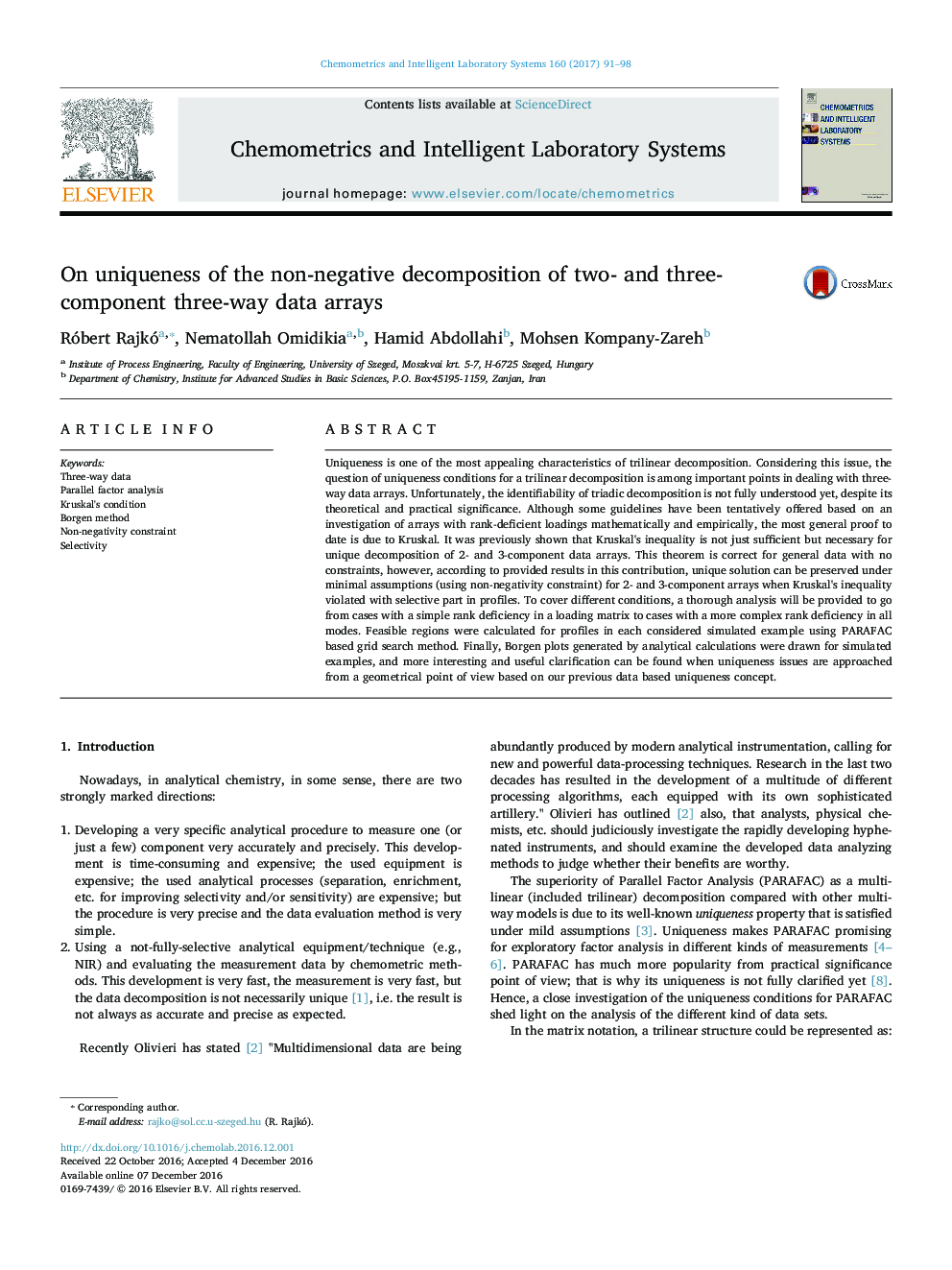| کد مقاله | کد نشریه | سال انتشار | مقاله انگلیسی | نسخه تمام متن |
|---|---|---|---|---|
| 5132281 | 1491519 | 2017 | 8 صفحه PDF | دانلود رایگان |

- Unique solution may exist for 2- and 3-component multiway data arrays when kA+kB+kC <2R+2.
- Kruskal's condition is not necessary for constrained PARAFAC in cases of data based uniqueness.
- Special selective regions (special pattern of zeros) should exist in the profiles for uniqueness.
- The uniquely unraveled profiles can be used qualitatively and quantitatively directly without the risk of systematic error.
Uniqueness is one of the most appealing characteristics of trilinear decomposition. Considering this issue, the question of uniqueness conditions for a trilinear decomposition is among important points in dealing with three-way data arrays. Unfortunately, the identifiability of triadic decomposition is not fully understood yet, despite its theoretical and practical significance. Although some guidelines have been tentatively offered based on an investigation of arrays with rank-deficient loadings mathematically and empirically, the most general proof to date is due to Kruskal. It was previously shown that Kruskal's inequality is not just sufficient but necessary for unique decomposition of 2- and 3-component data arrays. This theorem is correct for general data with no constraints, however, according to provided results in this contribution, unique solution can be preserved under minimal assumptions (using non-negativity constraint) for 2- and 3-component arrays when Kruskal's inequality violated with selective part in profiles. To cover different conditions, a thorough analysis will be provided to go from cases with a simple rank deficiency in a loading matrix to cases with a more complex rank deficiency in all modes. Feasible regions were calculated for profiles in each considered simulated example using PARAFAC based grid search method. Finally, Borgen plots generated by analytical calculations were drawn for simulated examples, and more interesting and useful clarification can be found when uniqueness issues are approached from a geometrical point of view based on our previous data based uniqueness concept.
170
Journal: Chemometrics and Intelligent Laboratory Systems - Volume 160, 15 January 2017, Pages 91-98